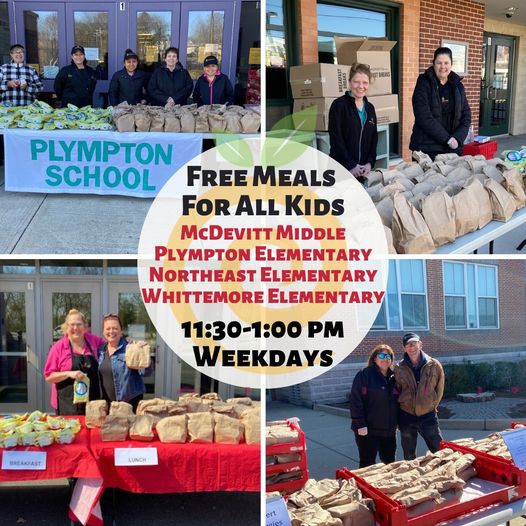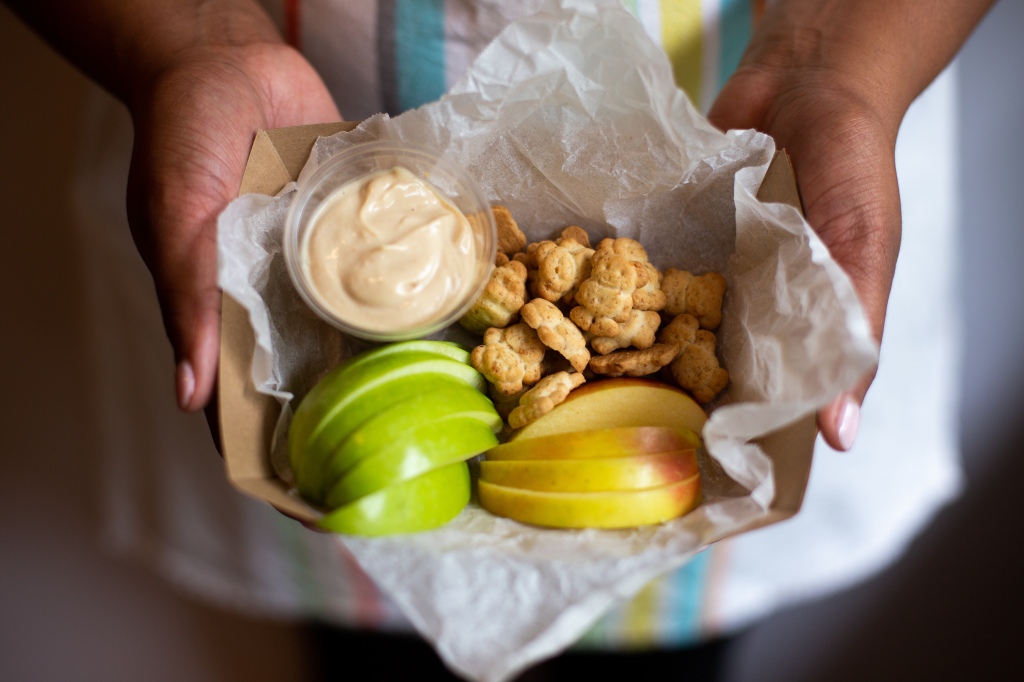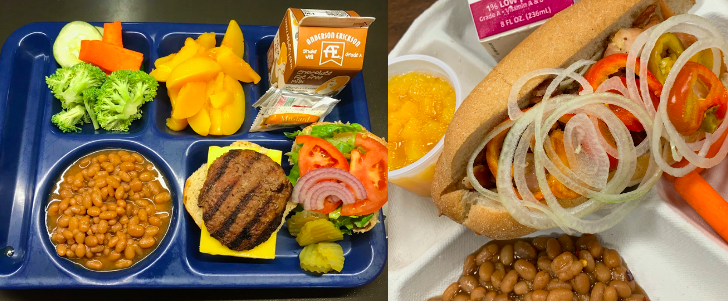April Liles, RD, SNS, has been the Child Nutrition Program Director in Waltham (Massachusetts) School District for 7 years. The district has about 5,500 students and, pre-COVID, 51 percent were eligible for free/reduced meals. They have been fully remote until two weeks ago (serving over 1 million meals) and now gearing up to have all students back in the building on April 5. This March 19, 2021, Facebook post helps to tell the year-of-COVID19 story in Waltham Public Schools: This picture was from one year ago and honestly, we didn’t know much. We didn’t know to wear masks, stay distanced or how this pandemic would change the world forever. What we did know is – WE MUST FEED THE CHILDREN! And thus – we did just that. Over and over again each week, into the summer and into this entire school year. It is what we have always done and so we moved forward together into the unknown.
What was the biggest challenge that you had to overcome in the past year?
As a nutrition director, April has always been focused on food and people. Her biggest COVID19 challenge was people piece – the 70 employees of her department who had not signed up to be frontline, essential ‘heroes.’ She says that her pandemic experience has been, and still is, transformative in terms of leadership style – life-changing in both professional and personal ways. April has learned how to step back, and let employees move to the front, perform and do what they have trained to do: “I am so proud and humbled by my team’s readiness to just do the work.”
What achievement are you the proudest of in the past year?
Noting that you are nothing without your team, April is proud of being able to maintain staffing and keeping entire nutrition Food and Nutrition Services on the payroll. They were able to feed the families of the city well because of their teamwork. And they have amped up their sanitation protocols in response to pandemic precautions, involving teamwork with building custodians to be “impeccably clean and sanitized.”
Teamwork is also what allowed WPS to maintain the integrity of meals delivered as curbside kits rather than on trays in cozy cafeterias. This also required letting go – no more colorful salad bars and delightful food art – and a new focus on “Build Your Own” instructions for items like parfaits and trendy tortilla hacks. April and her RDN partner Haylee Dussault continue to create home-run meal kits by introducing other on-trend items like Korean Bibimbap.
What innovation have you made that you will continue using in the future?
April is eager to expand their in-school offerings with carts and kiosks in the hallways and enhanced deliveries to classrooms. Her staff is energized to try new things and building administrators are now wanting to sit down and talk about it. Bulk meals outside school day have become a reality – for weekend and vacation meals as well as virtual learners. Of course, she definitely plans to keep the new super-sanitation procedures in place as well.


















